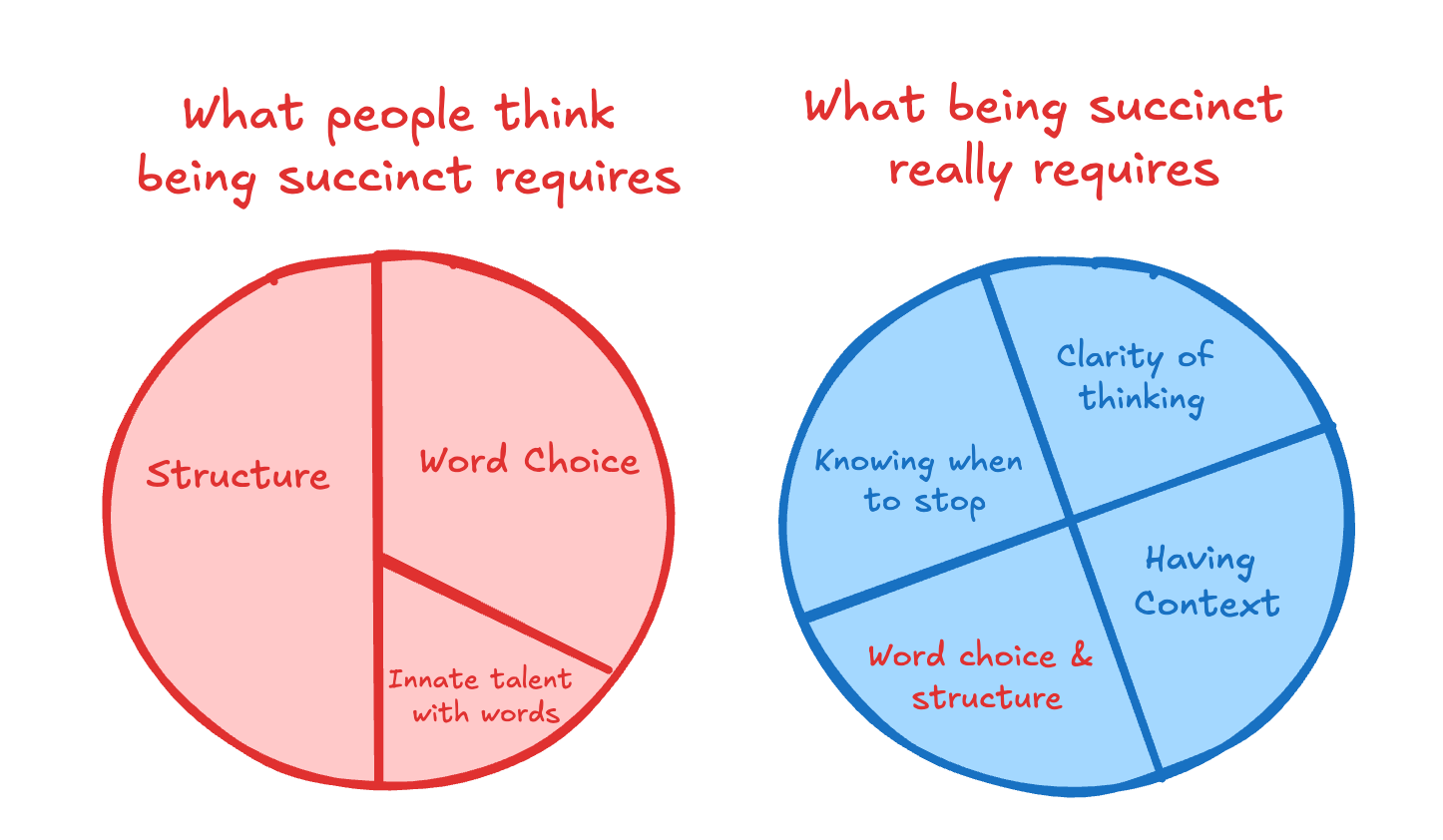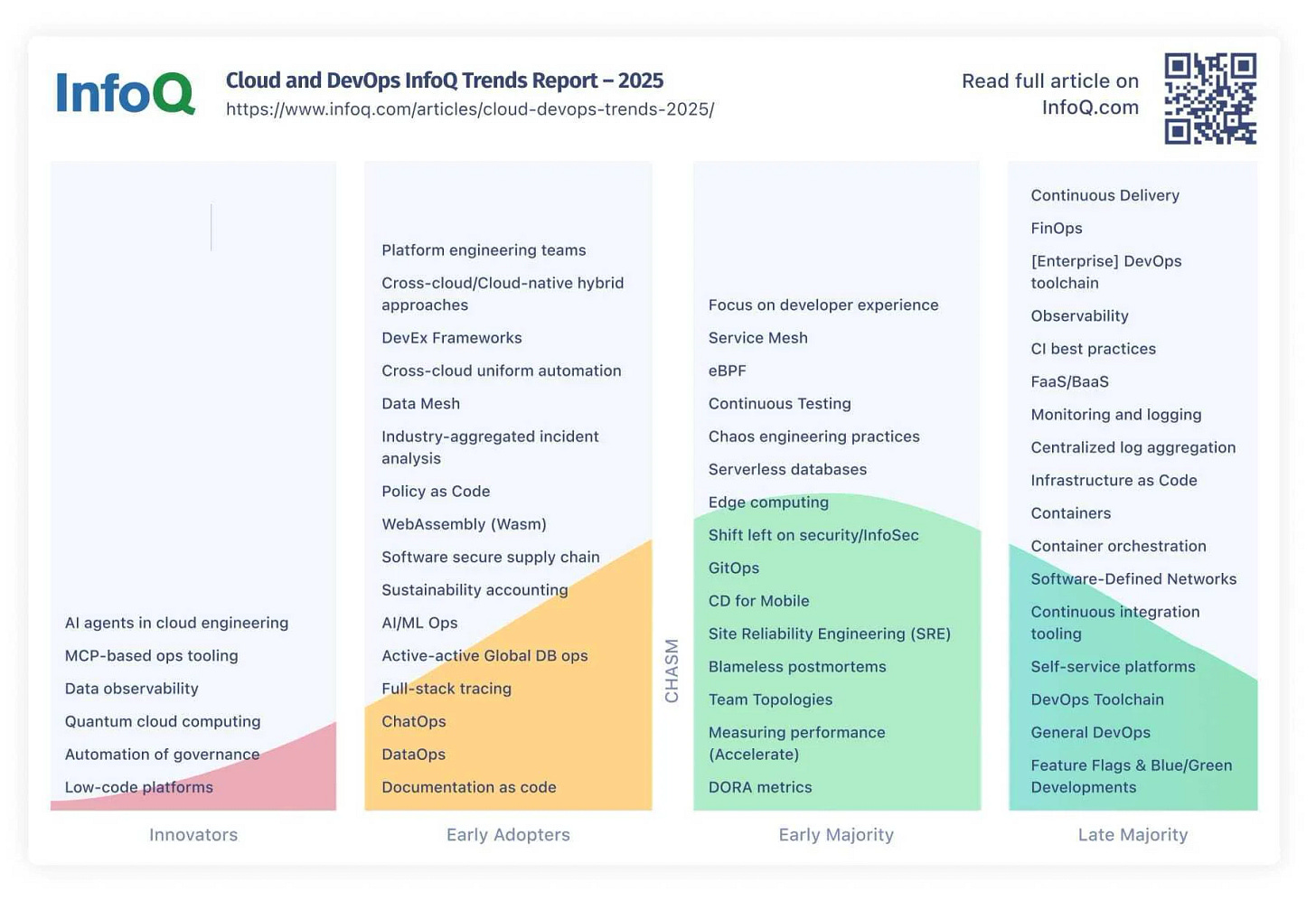Thoughts For The Week - 2025.11.09
Being Succinct, DevOps Trends 2025, Dual Track Agility
The top three posts this week cover:
Being succinct with context & clarity of thinking
Info Q’s DevOps Trends Report
Incorporating AI into agile processes
1. Being Succinct
Yue Zhao’s post How to communicate succinctly to executives actually provides guidelines that are helpful in all communication not just to executives.
At the core of this concept is the scarcity of time. Time is the most limited commodity for executives. Due to the number of priorities executives juggle at any point, they tend to have short attention spans, even for topics they truly care about. This is why being brief is critical to being heard. If you start in the weeds or ramble off to a tangent, executives lose focus.
Takeaway Nugget 1: What’s the context? Can you concisely explain the background to frame the proposal or information that you want to share. (Hint SCR: Situation, Complication, Resolution) can be very useful to push to thinking outside the raw tech details.
2. InfoQ Cloud and DevOps Trends Report - 2025
InfoQ Cloud and DevOps Trends 2025
The rise of AI Agents for cloud engineering shows a lot of promise. However, enterprise adoption is slowed by compliance, security, and the need for human governance alongside legacy systems.
Platform Engineering is a boardroom priority driven by developer experience (and ultimately, productivity). Yet, success is often limited by organizational tool fragmentation and a lack of foundational Value Stream Management.
FinOps has matured beyond budgeting to focus intensely on cost optimization and strategic consolidation, driven by global pressure to “do more with less” and the high compute costs of AI initiatives.
The influx of new tools and AI mandates is currently increasing cognitive load across all roles, not reducing it. Leaders must prioritize consolidation and measure value beyond “vanity metrics”.
Takeaway Nugget 2: Platform Engineering is a boardroom priority driven by developer experience. It’s tech’s job to drive this agenda. What’s your contribution?
3. Dual Track Agility
Jurgen Appelo’s post provides a great analogy for the dual-track business agility. Scrum originally pushed business to think in quicker iterations. With AI tooling the new two week standard sprint starts to look slow.
Fitting in with Dev Ops trends the challenge is how we can support and integrate more AI tooling. This will require a rethinking our processes and removing new bottlenecks that appear.
Trying to make AI agents follow Scrum is like forcing self-driving cars to yield at every crosswalk. In traffic, that makes sense. In the enterprise, it’s absurd. The rituals that once liberated humans now shackle their digital colleagues. As artificial minds join our teams, they’ll demand their own lanes, their own cadence, and their own logic of collaboration. The challenge ahead isn’t to make AIs agile—it’s redesigning business agility itself, so humans don’t become the bottleneck in their own product development process.
Acceleration is the new Agile. But only when we take Scrum out of the loop.
Takeaway Nugget 3: Challenge yourself. What’s the current bottleneck in your release process? How can you resolve this?
Have a great week.



